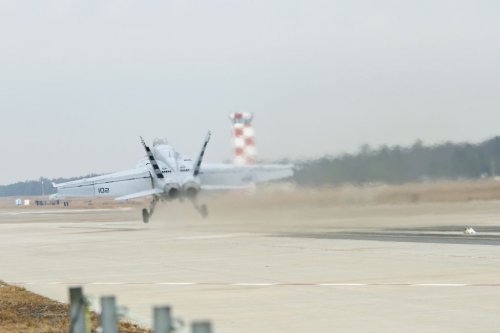- Joined
- 25 June 2009
- Messages
- 14,757
- Reaction score
- 6,158
Navy's electromagnetic catapult launches first manned aircraft at Lakehurst
Navy launches manned aircraft with new system
BY KIRK MOORE • STAFF WRITER • DECEMBER 21, 2010
ASBURY PARK PRESS
LAKEHURST — The first live aircraft launch using the Navy's electromagnetic catapult was a success when an F/A-18E Super Hornet thundered off the test site here Tuesday, Navy officials said.
First envisioned in the 1980s, the Electromagnetic Aircraft Launch System got major funding in 2004 and the $573 million full-scale program began experiments with rolling test vehicles a year ago. Tuesday's launch was the first of a manned aircraft, flown by Lt. Daniel Radocaj, a test pilot from Air Test and Evaluation Squadron 23 at the Navy's Patuxent River, Md., Naval Air Systems Command test center.
"The catapult stroke felt similar to a steam catapult, and EMALS met all of the expectations I had," Radocaj was quoted in a statement issued by Navy officials.
Steam pistons have powered catapults on the Navy's aircraft carriers for 50 years, and will remain a backbone of carrier operations for decades to come. But starting with the next new aircraft carrier CVN 78, to be named the USS Gerald Ford, the Navy will use the EMALS system as part of its drive to reduce maintenance and personnel costs in the long term.
Linear electromagnetic motors are at the heart of the EMALS system, with controls that allow operators to fine-tune the energy to match acceleration and takeoff speeds for different aircraft types.
That will reduce wear and tear on aircraft, while the EMALS system itself will require much less maintenance and spare parts, and fewer people to keep it running, Lakehurst engineers say. Farther out, they are working on applying electromagnetic forces to the receiving end of carrier flight decks — to power the brakes on arresting gear cables that snag landing aircraft and bring them to a halt.
Tuesday's launch showed that EMALS will work, said Kathleen Donnelly, director for the Navy's Support Equipment and Aircraft Launch and Recovery group at Joint Base McGuire-Dix-Lakehurst. "Now we'll work toward answering the question will EMALS be reliable?" she said in a statement. "That answer will also be a resounding "yes.' "
The test program is expected to continue this winter using F/A-18E aircraft, before the program adds a T-45 Goshawk trainer and a C-2 Greyhound cargo aircraft next year, said Thomas Worsdale, a Naval Air Systems spokesman.
Source: http://www.navair.navy.mil/lakehurst/nlweb/pao/InTheNews/2010-12-21_Navy%27s_electromagnetic_catapult_launches.pdf

